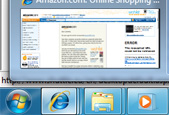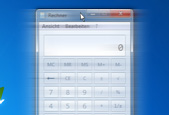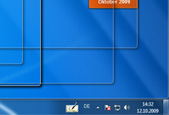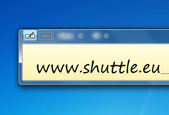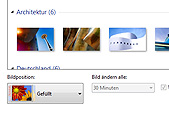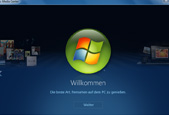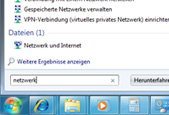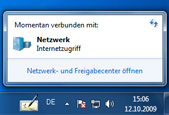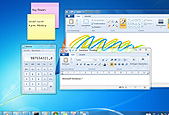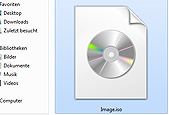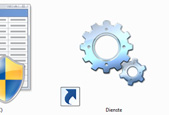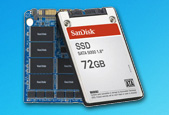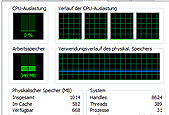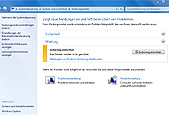Enhanced interface
Task bar
The improved task bar has larger icons, is better structured and shows a preview of program windows on several levels. It also has an extremely wide range of customising options.Jump Lists
Faster access to your favourite photos, music, Internet pages and documents. Left-click an icon on the task bar, hold down the mouse button and drag the mouse pointer to the centre of the screen to show the Jump List.Aero Shake
This new feature is useful when you've opened an important window and want to tidy up your screen and minimise all other windows. Simply grab the top edge of the window and shake it briefly. When you shake it again, all the windows reappear.Aero Peek
Hover the mouse over the Aero Peek button to have a look at the gadgets on your desktop. Clicking the button minimises all windows.Aero Snap
Move a program window to the top right or top left edge of the screen to arrange your windows. Aero Snap automatically docks the windows and adapts their size.Optimised for touchscreen use
The control elements in Windows 7 have been optimised for the first time for use with a touchscreen. Large icons on the task bar and increased spaces on the Start menu make it easier to select buttons with finger or stylus. The extensive tablet PC functions enable control without a keyboard.More options
Windows Media Center
The latest version of Windows Media Center is even more user-friendly and has been provided with many additional extras, e.g. HDTV support.Search feature
Finding files and programs is as easy as searching the Internet. The Start menu and all folder windows now have a search box in which you can enter search terms. For instance, you can enter "Notepad" in the Start menu to access the text editor. You can also find files – or even text within a document – by using the search box in a folder (e.g. My Documents).Gadgets
You can now position digital gadgets on your Windows 7 desktop for up-to-the-minute information or entertainment.Easier network connections
You can access all available networks with just a single click on the task bar, no matter whether these networks are based on WLAN or Mobile Broadband (3G) or whether it's a dial-up network or your company's VPN.HomeGroup
Networking multiple home PCs has never been easier. A home network group (HomeGroup) is automatically set up when you connect the first PC with Windows 7 to the HomeGroup. Adding further PCs with Windows 7 to the HomeGroup and setting up authorisations is child's play.Improved basic software
The WordPad, Paint and Calculator programs supplied in all previous versions of Windows have received a complete transformation. WordPad and Paint now use the Ribbon interface of Office 2007 and the Calculator has been given a host of additional functions. Plus, the new Snipping Tool is a useful program for creating screenshots and with Sticky Notes you can stick digital post-it notes to your screen.Higher performance and faster response
Full 64-bit support
Modern, 64-bit compatible PC supports more than 4 GB RAM, which gives it more multi-tasking capabilities. Windows 7 now offers full 64-bit support and is therefore 100% future-proof.Services only start when needed
Windows 7 does not load system services until they are needed, thus saving on valuable system resources. This clever solution appreciably speeds up your computer on start-up and during routine operations.Optimised for SSDs
When a Solid State Disk is used under Windows 7, some services that are extremely useful with normal hard disks are deliberately deactivated, e.g. Disk Defragmenter, Superfetch, ReadyBoost and the acceleration of system and application start-up. Because of their characteristics these services slow down SSDs and minimise the speed advantage.More stable operation
